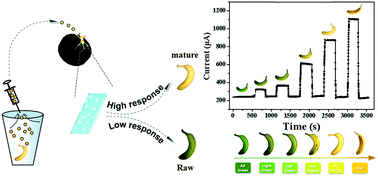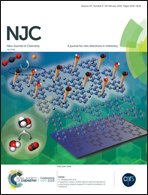The detection of ethylene using porous ZnO nanosheets: utility in the determination of fruit ripeness
Abstract
Porous ZnO nanosheets have been successfully synthesized through a one-pot wet-chemical method followed by an annealing treatment. The as-prepared products were characterized by X-ray diffraction (XRD), scanning electron microscopy (SEM), transmission electron microscopy (TEM) and Brunauer–Emmett–Teller (BET) theory. The results indicate that the porous ZnO nanosheets with a length of a few micrometers were full of mesopores. The porous ZnO nanosheets combining the advantages of having porous structures, being single-crystalline, and being ultra-thin present a pretty good sensing performance and a dramatic response speed in ethylene detection. The response and recovery times are 8 s and 20 s, respectively, which are the rapidest response and recovery speeds in ethylene sensors to our knowledge. The sensing mechanism has also been discussed. Furthermore, the porous ZnO nanosheets are employed to determine fruit ripeness by using bananas as an example. It can be found that the porous ZnO nanosheets present different responses to bananas at different maturity stages. It is expected that the porous ZnO nanosheets may provide a new pathway to develop advanced nanomaterials for practical application in ethylene monitoring during the fruit ripening process.



 Please wait while we load your content...
Please wait while we load your content...